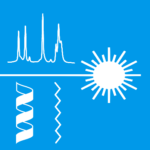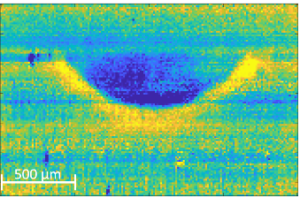Applied Spectroscopy
 Theme overview and objectives
Theme overview and objectives
The main objective of the working group “Applied Spectroscopy” is the generation of insights into cause-effect relationships of complex molecular systems and their associated processes. The applied spectroscopic measurement techniques ensure spatially and time-resolved, non-invasive in situ determination of characteristic properties from biochemical to material scientific problems. To that end, tailored solutions ranging from process-adapted experimental setups to advanced evaluation methods of spectral data are developed.
Methods and capabilities
The existing technical and scientific know-how of the group enables the implementation of a variety of optical measurement techniques to meet complex process-specific requirements. For this purpose Raman, absorption, and fluorescence spectroscopy are applied, in many cases even used simultaneously. The analysis and interpretation of optical measurement signals is primarily carried out by combining theoretical principles of molecular physics, chemistry, and biology with methods of signal processing and multivariate data analysis. These results are often compared to results from numerical simulation.
Highlights
- Spatially resolved crystallinity determination in polymer weld seams
The crystallinity of thermoplastic polymers influences the polymers’ chemical, optical and mechanical properties. Therefore, knowledge of the spatial crystallinity distribution in laser polymer weld seams is of high scientific and technical interest. Raman microspectroscopy ensures the spatial quantification of the weld seam’s crystallinity with micrometer resolution. Employing the obtained insights optimal laser welding parameters can be selected to guarantee tailored material properties.
Crystallinity map in a polymer weld seam
blue: low crystallinity
yellow: high crystallinity  Structural changes in proteins during single droplet drying
Structural changes in proteins during single droplet drying
Drying processes in the pharmaceutical industry, such as spray drying, may cause protein structure changes leading to a loss of protein activity. To mimic these drying processes and to investigate the ongoing structural changes, acoustically levitated droplets are investigated. To that end, structural changes of the proteins are assessed in situ by Raman and fluorescence spectroscopy, respectively. To correlate the structural changes with the drying progress, the water concentration in the exhaust gas of the drying chamber is determined by laser absorption spectroscopy.